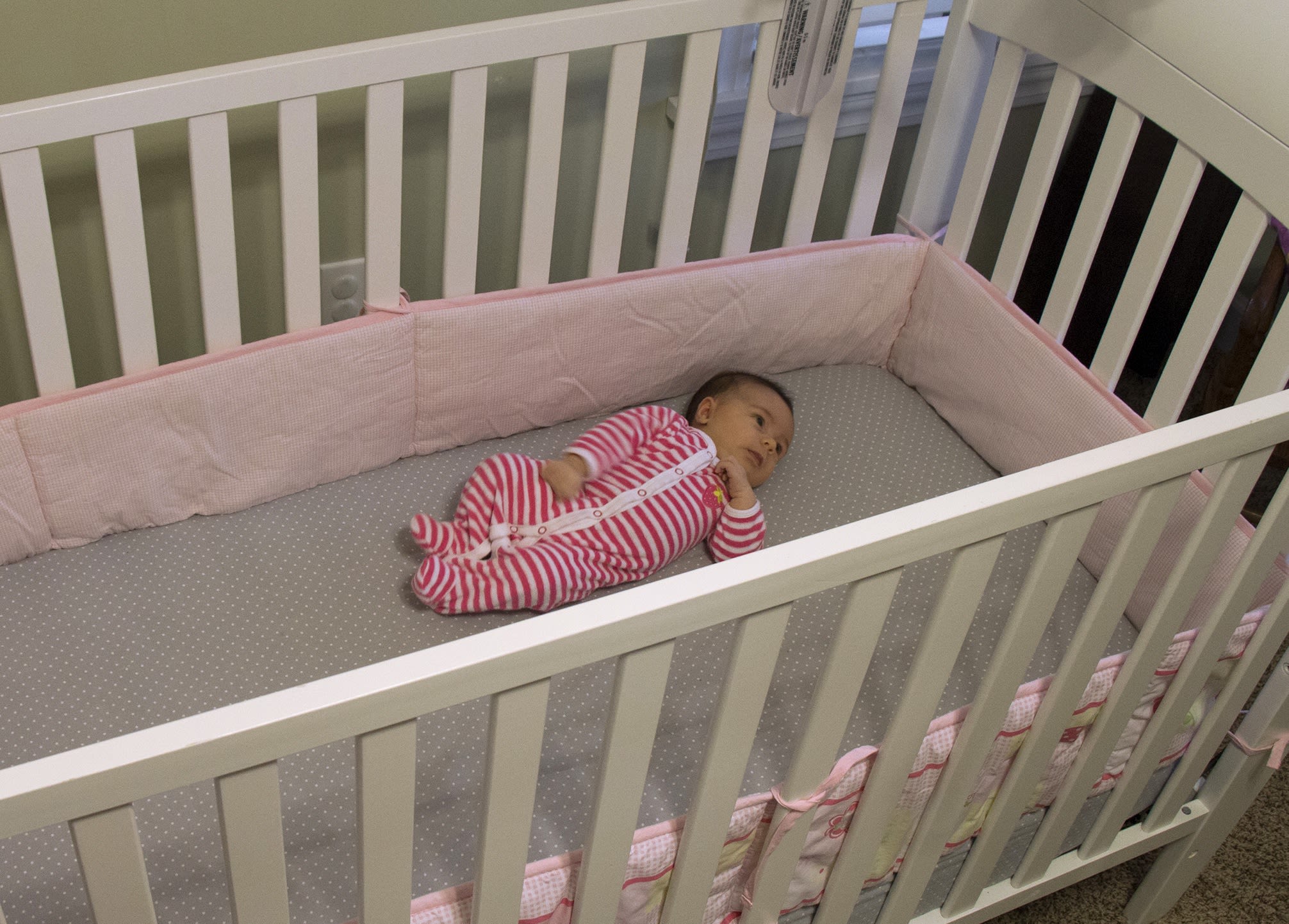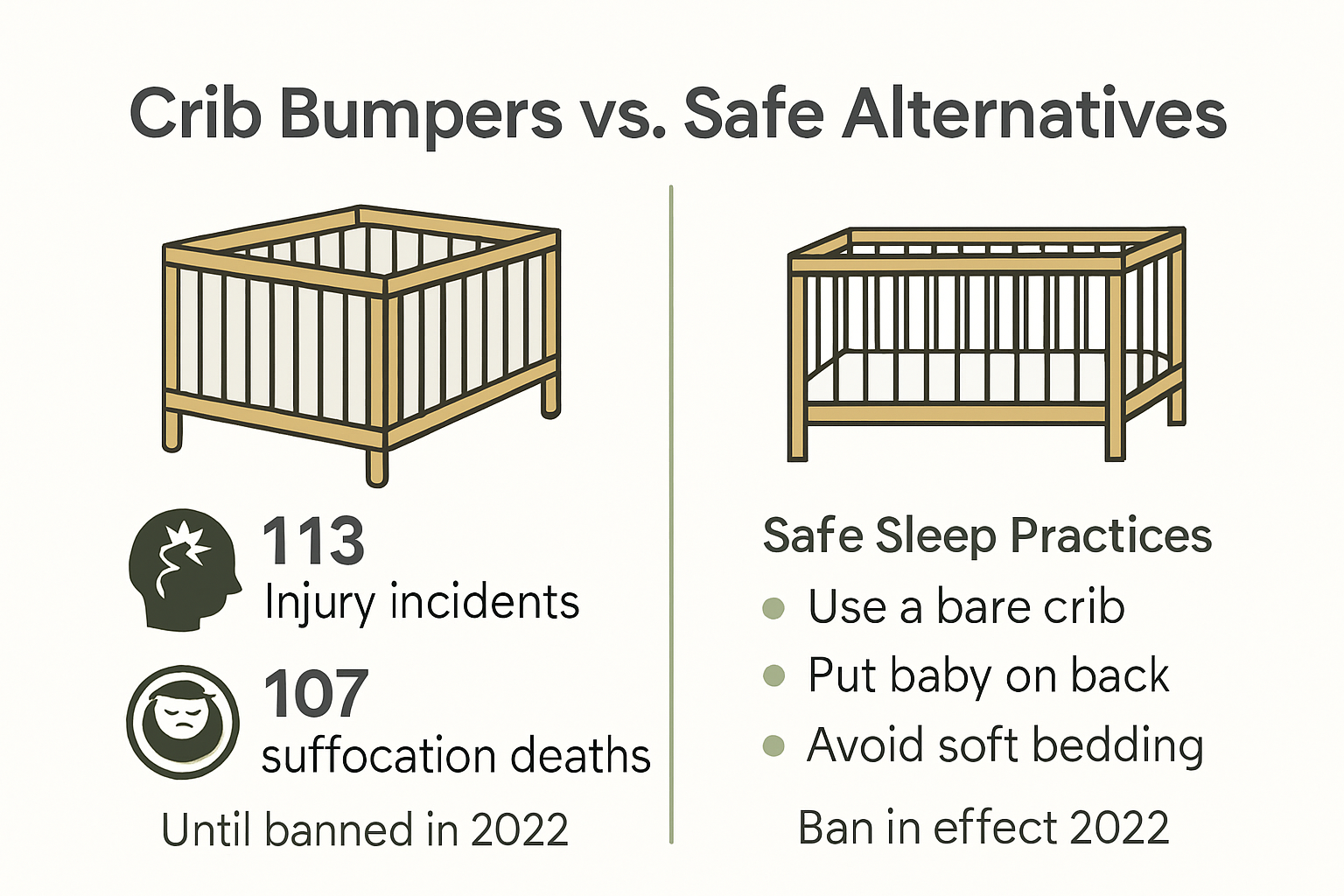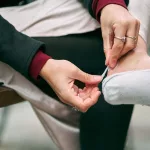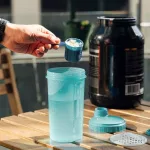Crib bumpers are easy to find and frequently included with crib bedding sets.
They look attractive and decorative, and they appear practical. They’re meant to make your baby’s sleeping area softer and more snug. Yet many specialists advise against using them. What’s the concern with crib bumpers, and why are they considered dangerous?
What exactly are crib bumpers?
Crib bumpers are padded fabric panels that line the perimeter of a crib. They were originally created to stop infants’ heads from slipping between crib slats, which historically were spaced farther apart than they are now.
Bumpers also aimed to form a cushioned barrier around the baby, preventing them from striking the hard wooden sides of a crib.
Why are crib bumpers considered hazardous?
In September 2007, research published in The Journal of Pediatrics concluded that crib bumpers pose a safety risk.

The investigation identified 27 infant fatalities linked to bumper pads, either because the infant’s face was pressed against the bumper, causing suffocation, or because a bumper tie became wrapped around the baby’s neck.
The researchers also found that crib bumpers don’t reliably prevent serious injuries. They examined injuries that might have been avoided by a bumper and discovered mostly minor wounds such as bruises. Although there were instances of fractures when a baby’s arm or leg became trapped between slats, the authors noted that a bumper wouldn’t necessarily have averted those injuries. They advised that crib bumpers should never be used.
In 2011, the American Academy of Pediatrics (AAP) broadened its safe sleep recommendations to advise parents against using crib bumpers. Citing the 2007 research, the AAP stated: “There is no evidence that bumper pads prevent injuries, and there is a potential risk of suffocation, strangulation, or entrapment.”
Are newer styles of crib bumpers any safer?
Still, bumpers remain available for purchase. Why can you buy them if the AAP advises against them? The Juvenile Products Manufacturers Association (JPMA) does not concur that crib bumpers are always unsafe. In a 2015 release, the JPMA asserted, “At no time has the crib bumper been cited as the sole cause of an infant’s death.”
The statement also warned that “the removal of a bumper from a crib will also remove its benefits,” such as lowering the chance of bumps and bruises from arms and legs getting caught between slats. The JPMA’s position is that if bumpers comply with voluntary standards for infant bedding, they can be used safely.
The Consumer Product Safety Commission (CPSC) has not issued mandatory safety regulations for crib bumpers and has not declared them unsafe. However, on its safe sleep guidance pages, the CPSC recommends keeping the crib bare, with only a fitted sheet on the mattress.
Do breathable or mesh bumpers reduce the risk?
As awareness of traditional bumper risks grew, some makers introduced mesh crib bumpers. These are designed to reduce suffocation risk if a baby’s face presses against the bumper. Because they’re constructed of a breathable mesh, they appear less risky than thick, blanket-like bumpers.

Nevertheless, the AAP continues to advise against any type of bumper. Bumpers produced after safety concerns emerged remain hazardous, as shown in a 2016 study in The Journal of Pediatrics, which indicated that bumper-related deaths are rising. While that study could not determine whether the increase was due to better reporting or a real rise in fatalities, the authors recommended that the CPSC prohibit all bumpers, since the research did not demonstrate benefits.
Is there ever a safe use for bumpers?
So, are bumpers ever acceptable? Although differing guidance from the JPMA and AAP can be confusing, this is one situation where following medical advice is prudent.
Unless the CPSC enacts binding standards for bumper safety, the safest course for parents is to adhere to AAP guidelines. Lay your baby to sleep on their back, on a firm mattress with nothing in the crib except a fitted crib sheet. No loose blankets, no pillows, and certainly no bumpers.


















Leave a Reply
You must be logged in to post a comment.